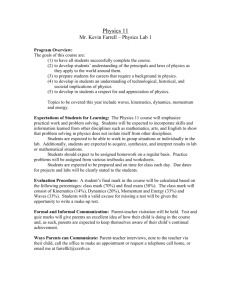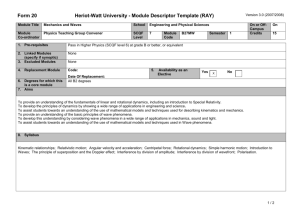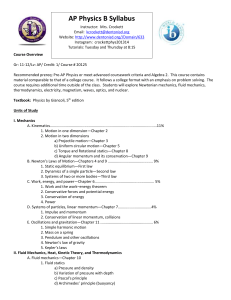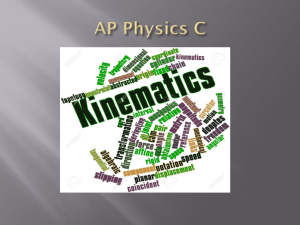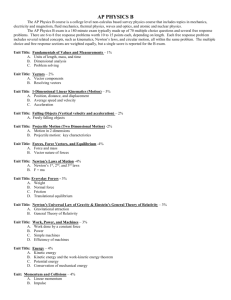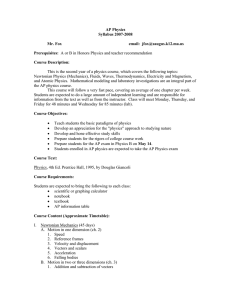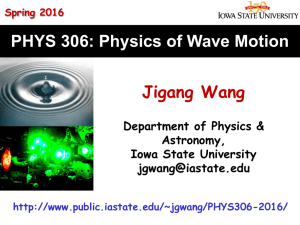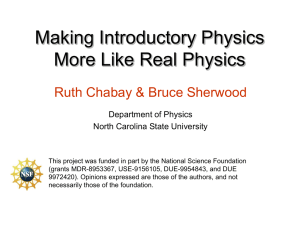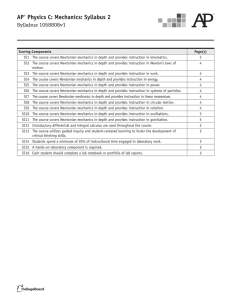AP Physics - SchoolNotes
advertisement
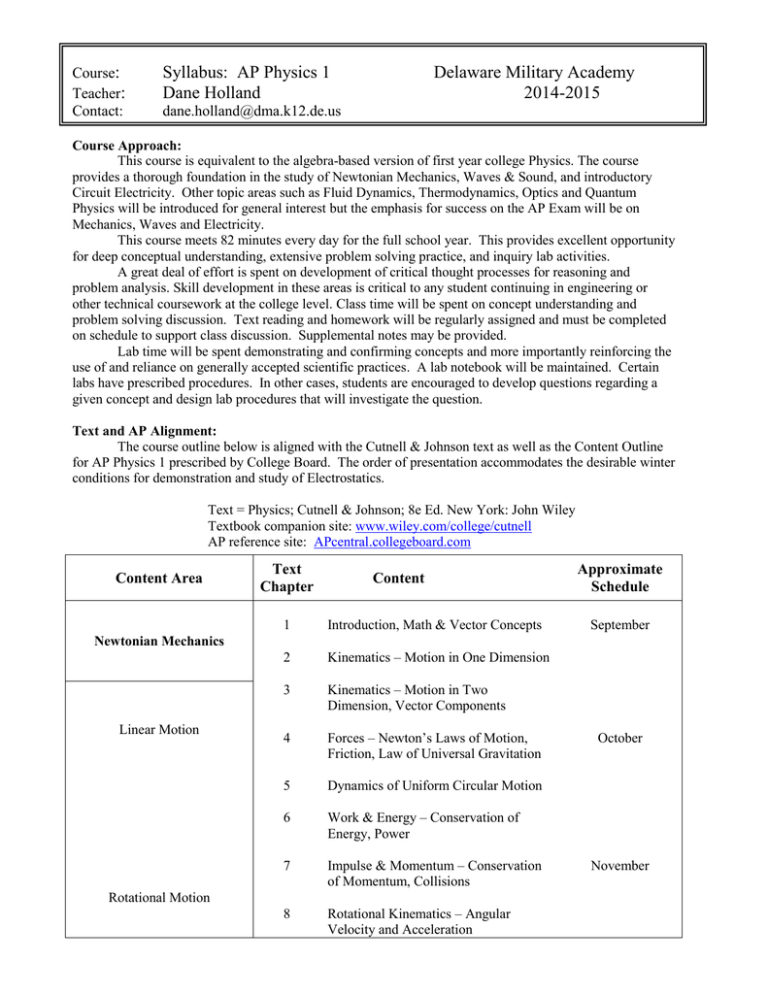
Course: Teacher: Contact: Syllabus: AP Physics 1 Dane Holland Delaware Military Academy 2014-2015 dane.holland@dma.k12.de.us Course Approach: This course is equivalent to the algebra-based version of first year college Physics. The course provides a thorough foundation in the study of Newtonian Mechanics, Waves & Sound, and introductory Circuit Electricity. Other topic areas such as Fluid Dynamics, Thermodynamics, Optics and Quantum Physics will be introduced for general interest but the emphasis for success on the AP Exam will be on Mechanics, Waves and Electricity. This course meets 82 minutes every day for the full school year. This provides excellent opportunity for deep conceptual understanding, extensive problem solving practice, and inquiry lab activities. A great deal of effort is spent on development of critical thought processes for reasoning and problem analysis. Skill development in these areas is critical to any student continuing in engineering or other technical coursework at the college level. Class time will be spent on concept understanding and problem solving discussion. Text reading and homework will be regularly assigned and must be completed on schedule to support class discussion. Supplemental notes may be provided. Lab time will be spent demonstrating and confirming concepts and more importantly reinforcing the use of and reliance on generally accepted scientific practices. A lab notebook will be maintained. Certain labs have prescribed procedures. In other cases, students are encouraged to develop questions regarding a given concept and design lab procedures that will investigate the question. Text and AP Alignment: The course outline below is aligned with the Cutnell & Johnson text as well as the Content Outline for AP Physics 1 prescribed by College Board. The order of presentation accommodates the desirable winter conditions for demonstration and study of Electrostatics. Text = Physics; Cutnell & Johnson; 8e Ed. New York: John Wiley Textbook companion site: www.wiley.com/college/cutnell AP reference site: APcentral.collegeboard.com Content Area Text Chapter Content 1 Introduction, Math & Vector Concepts 2 Kinematics – Motion in One Dimension 3 Kinematics – Motion in Two Dimension, Vector Components 4 Forces – Newton’s Laws of Motion, Friction, Law of Universal Gravitation 5 Dynamics of Uniform Circular Motion 6 Work & Energy – Conservation of Energy, Power 7 Impulse & Momentum – Conservation of Momentum, Collisions 8 Rotational Kinematics – Angular Velocity and Acceleration Approximate Schedule September Newtonian Mechanics Linear Motion Rotational Motion October November Page 2 AP Physics 1 2014-15 Syllabus 9 Rotational Dynamics – Torque, Equilibrium, Angular Momentum 10 Simple Harmonic Motion – Springs, Pendulums, Restoring Force 18 Electric Forces & Fields – Coulombs Law, Conductors & Insulators January 20 Circuits – Current, Resistance, Power, Series and Parallel Circuits February 16 Waves and Sound – Wave Propagation, Properties of Sound, Doppler Effect, the Human Ear 17 Superposition – Constructive and Destructive Interference, Standing Waves, Beats, Noise Cancellation December Periodic Motion Electricity & Magnetism Mechanical Waves & Sound March The following topics are beyond the scope of this course but are often asked for by interested students. These topics will be introduced and discussed as time allows but are not included on the AP Physics 1 Exam. 11 12 Fluid Mechanics & Thermal Physics 13 14 15 28 Atomic and Nuclear Physics 29 30 Fluids – Pressure, Bernoulli’s Equation Temperature & Heat, Thermal Expansion Heat Transfer – Convection, Conduction, Radiation Ideal Gas Law – Kinetic Molecular Theory Thermodynamics – PV Diagrams, Heat Engines Atomic Physics – Photons, Photoelectric Effect Wave Particle Duality Nature of the Atom – Atomic Energy Levels Jan-Feb Mechanics Review and Practice Exams April-May AP Exam May 2015 April
